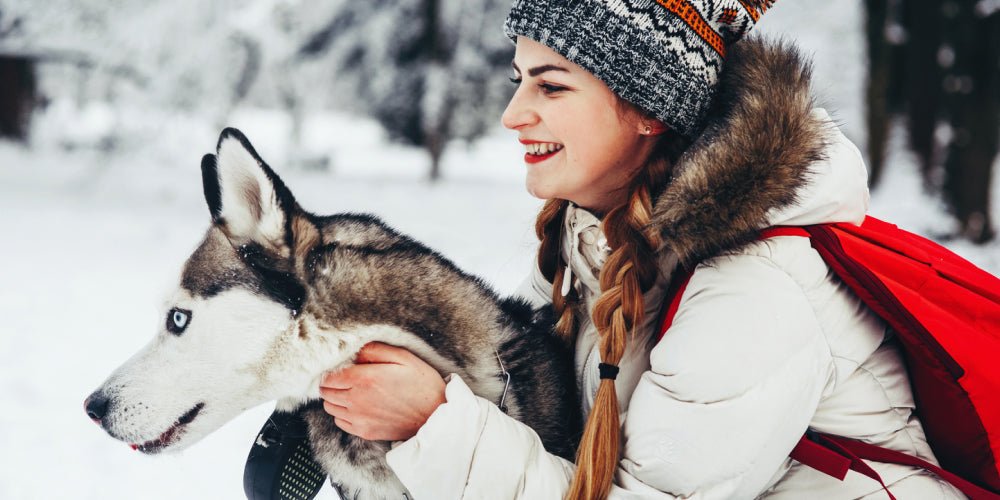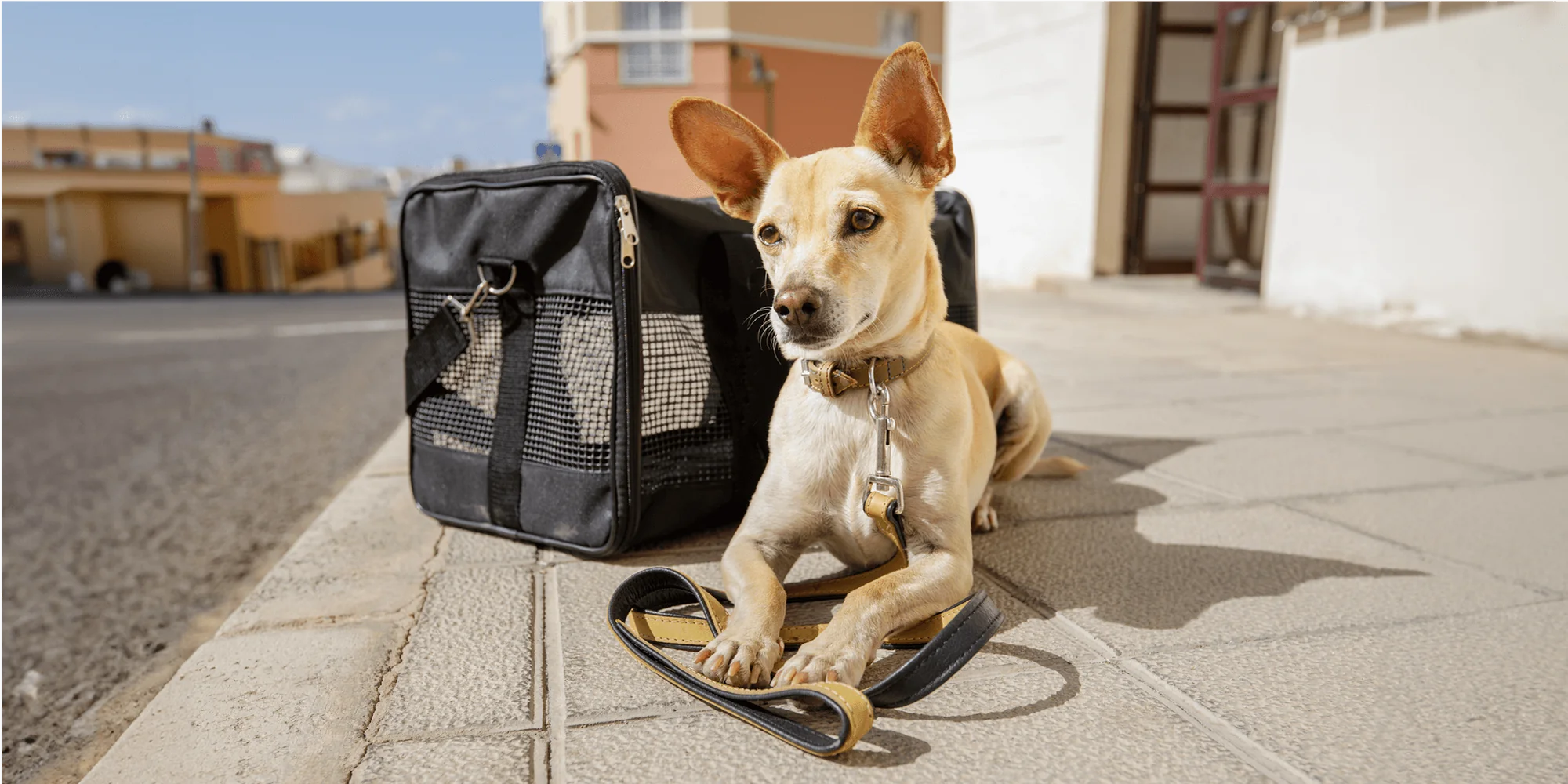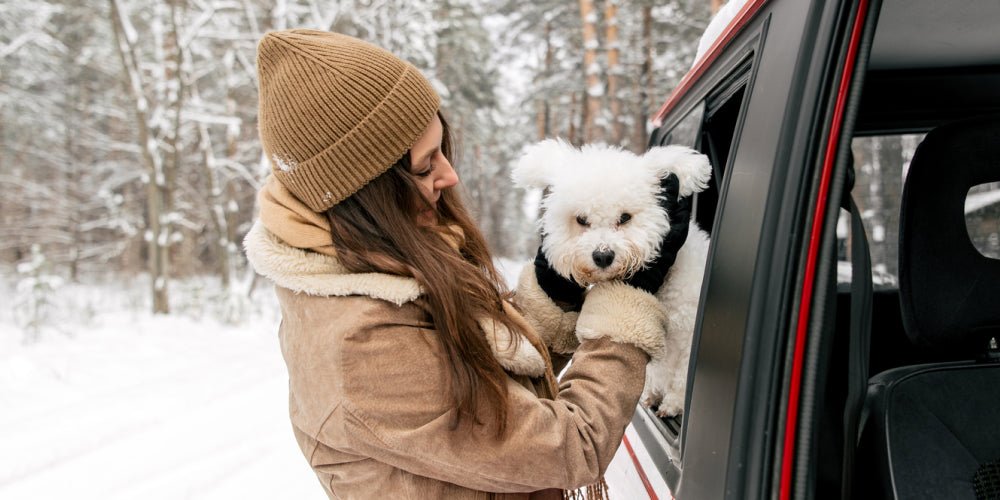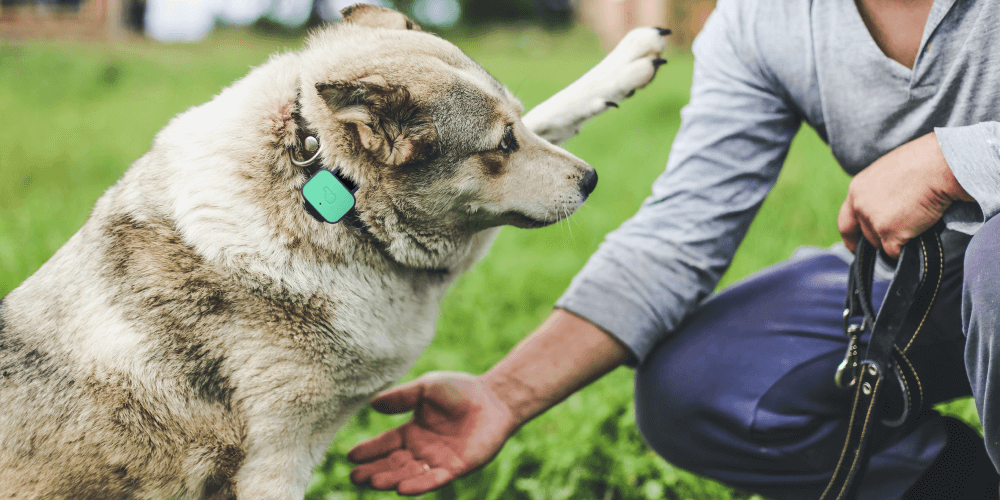Staying Active in the Winter

Your dog is eager to get outside and explore the neighborhood but frigid temperatures, icy sidewalks and steep snowbanks can make it challenging to take daily walks in the winter.
Staying active is essential and regular exercise has big benefits for your dog.
Improved health: More than half of dogs in the United States are overweight or obese. The extra weight puts pressure on their joints and increases the risk of arthritis, cancer and heart, kidney and liver disease; it can even decrease their lifespan. Regular exercise can help your dog achieve or maintain a healthy weight and reduce the risk of disease.
Better mental health: Walks allow your dog to explore their surroundings and experience new sights, scents and sounds. Staying active provides mental stimulation that can alleviate boredom, reducing the odds that your dog will get into trouble trying to burn off pent up energy indoors.
Walking dogs in the cold takes a little extra preparation. In addition to 9 Ways to Keep Your Dog Safe in the Snow, including wiping down their paws to remove rock salt, antifreeze and other potentially dangerous chemicals after a walk, these strategies will show you how to keep your dog active in the winter.
Stay safe: When it comes to dogs in the cold, safety matters. Stay indoors during storms, stick to the sidewalks and never let your dog run off leash in open areas because they can lose their scent and become lost.
A Whistle device with GPS monitoring can keep pets safe outside; the devices also track changes in behavior such as increases in scratching that could be a sign of a dry winter skin and allow you to provide relief, including 3 Natural Remedies for Your Dog’s Dry Winter Skin.
Dress for the weather: Winter clothes for dogs are a good option to keep dogs warm. It’s especially important to provide extra insulation for small dogs that have a harder time maintaining their body temperatures; senior dogs may also need a dog winter coat to stay warm. Dog boots for winter are also important to prevent dry paws in winter from the rock salt on sidewalks and roads.
Keep it brief: Skip the long walks that keep dogs in the cold for extended periods and take several short walks instead. Your dog stays active but spends less time exposed to the cold, snow and ice. Use your Whistle device to set an activity goal to make sure your dog is getting enough exercise in the winter.
Look for indoor options: Wondering, “Is it safe to walk my dog in cold weather?” The answer depends on the forecast. During days when the weather outside is frightful, seek out indoor dog parks, doggie daycare and other safe indoor spaces that offer alternatives to walking dogs during winter. There’s no need for a dog winter coat in these temperature controlled spaces—and your dog may even make new friends.
Watch for behavior change: Your dog may be telling you that it’s too cold for their daily walk. Look for signs like shivering, lifting paws off the pavement or tucking their tails that indicate your dog is uncomfortable in the cold and head back inside.
Whistle devices can monitor for changes in behavior and offer an Ask a Vet feature to connect you with a licensed vet via chat, call, video or email through the Whistle app if your dog is itchy in winter or you have any other health concerns.
Take the quiz to determine which Whistle device is right for your dog; the devices also make great holiday gifts.
Walking your dog in winter is important for their health and wellbeing and, with a little planning for how to keep you dog active in winter, you won’t spend the entire season waiting for spring.














